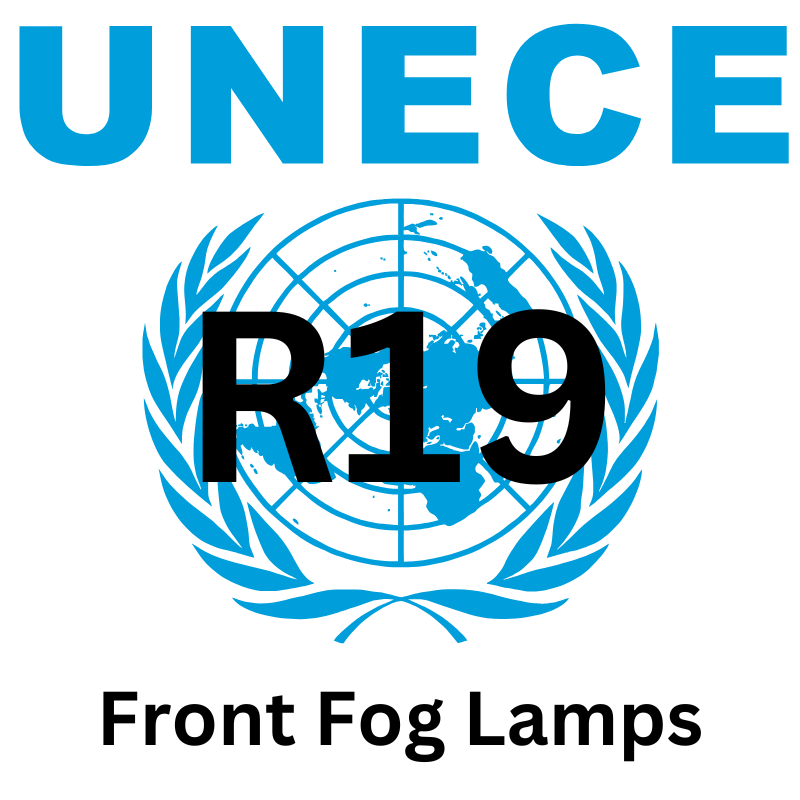Guide To: UNECE R19 - Front Fog Lamps
02 February 2022

Guide To: UNECE R19 - Front Fog Lamps
UN ECE Regulation No. 19 establishes uniform provisions concerning the approval of front fog lamps for motor vehicles. These lamps are critical for improving visibility during fog, heavy rain, or snowfall, where standard headlights might not be sufficient. The regulation outlines the design, performance, and safety requirements that front fog lamps must meet to ensure both the driver’s and other road users' safety.
Scope of the Regulation
UN ECE R19 applies to:
- Front fog lamps for vehicles, particularly those in categories L, M, N, and T, which include motorcycles, passenger cars, trucks, and agricultural tractors.
Key Features of UN ECE R19
Design and Construction:
- Fog lamps are designed to improve the driver’s visibility in foggy or adverse weather conditions, where low and wide beams are needed to cut through mist without creating glare.
- The lamps can incorporate lenses made of glass or plastic material, with special provisions for the stability of photometric performance when plastic lenses are used.
Classes of Fog Lamps:
- Class B: The standard class of fog lamps, designed with specific photometric values and limited light sources as per UN Regulation No. 37.
- Class F3: Designed to offer higher photometric performance with advanced features such as wider beam width, reduced veiling light, and increased luminous intensities below the horizontal plane.
Light Intensity and Colour Requirements:
- The fog lamps must emit either white or selective yellow light, with strict limits on light intensity to prevent dazzle and ensure effective illumination of the road.
- Both categories are tested for their ability to maintain consistent light output, with defined cut-off lines to minimize glare to other drivers.
Marking and Approval:
- Front fog lamps must display the manufacturer’s trade name or mark, along with approval marks to indicate compliance with the regulation. Class B fog lamps are marked with the letter "B," and Class F3 lamps with the symbol "F3".
- Approval is granted after a thorough testing process, including photometric, durability, and material tests to ensure that the lamps meet the regulation's safety and performance standards.
Adaptive Features:
- Class F3 lamps allow for adaptive beam patterns that adjust depending on visibility conditions. This feature offers greater control over the intensity of the light to prevent glare while optimizing visibility.
UN ECE R19 has been incorporated into UN ECE Regulation No. 149, which consolidates several lighting-related regulations into a single, streamlined framework. This consolidation brings front fog lamps under the broader category of road illumination devices, alongside headlamps and adaptive front-lighting systems. Regulation No. 149 simplifies compliance by harmonizing the technical requirements for various lighting systems, making it easier for manufacturers to ensure international approval for their lighting products.
Conclusion
Front fog lamps are an essential safety feature for vehicles in poor visibility conditions. Compliance with UN ECE R19 (now integrated into R149) ensures that these lamps meet stringent international standards for performance, safety, and durability. This regulation helps manufacturers design reliable and effective fog lamps that enhance road safety for all users.